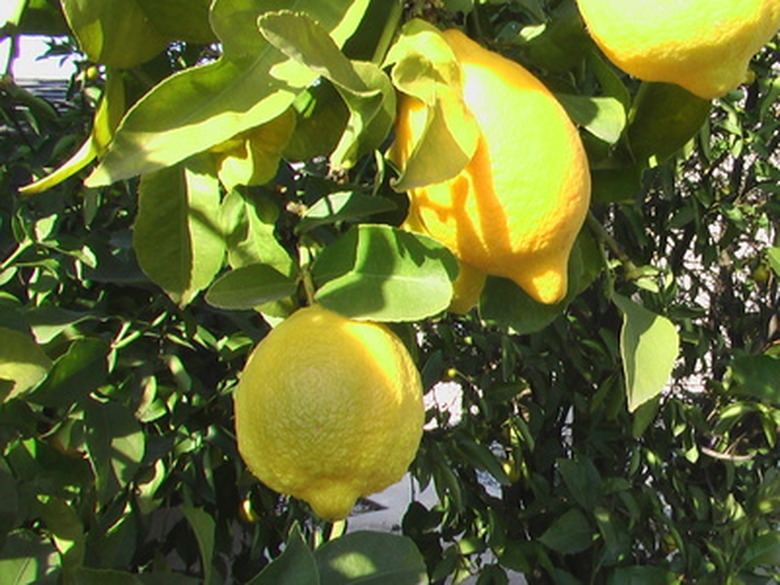How To Grow Citrus Trees In Texas
Things Needed
- Shovel
- Citrus sapling
- Water
- Nitrogen fertilizer
- Anvil pruners
- Burlap (optional)
- Pins (optional)
- Christmas lights (optional)
Texas gardeners can successfully enjoy most types of citrus, including lemon, orange, grapefruit and clementine. When planting a tree, choose a location that allows enough room for the tree to fully mature. Citrus limbs grow heavy enough with fruit to almost touch the ground, so avoid planting in areas that receive foot traffic. Texas A & M recommends planting citrus trees in the fall or winter in Texas, so the tree can adapt before a hot, dry spring and summer growing season.
Step 1
Choose a citrus variety that grows well in your region of Texas. While south Texas growers have little worry about cold, north Texans need to choose more cold-hardy types of citrus, such as tangerines, kumquats or Satsuma mandarins.
Step 2
Plant your citrus tree in full sun. Dig a hole that's twice as large as the plant's root ball. Remove your citrus tree sapling from its container and massage the root ball with your fingers, unwinding any tangled roots. Place the plant in the hole at the same depth as it was planted in the container and cover over the hole with soil.
- Texas gardeners can successfully enjoy most types of citrus, including lemon, orange, grapefruit and clementine.
- Texas A & M recommends planting citrus trees in the fall or winter in Texas, so the tree can adapt before a hot, dry spring and summer growing season.
Step 3
Water the newly planted citrus tree until the ground becomes saturated.
Step 4
Create a watering ring by molding the soil around the base of the tree. This ring should be 5 to 6 inches high and 6 to 8 inches thick. Water the citrus tree two more times during its first week by filling the watering ring to the top. In subsequent weeks, water once weekly by filling the hole. After one to two months the watering ring will dissolve into the soil. After this time, the tree can be watered with a garden hose when when the soil grows dry.
- Water the newly planted citrus tree until the ground becomes saturated.
- Water the citrus tree two more times during its first week by filling the watering ring to the top.
Step 5
Fertilize a newly planted citrus tree monthly from February to October in Texas. Texas A & M recommends using nitrogen only and suggests 1 cup of an 8 to 13 percent nitrogen fertilizer, or 1/2 cup of a 17 to 21 percent nitrogen fertilizer. For the second year, the amounts increase to 2 cups or 1 cup; for the third year, gardeners should use 4 cups of the 8 to 13 percent or 2 cups of the 17 to 21 percent.
To fertilize, scatter the recommended amount in a circle on the soil near the trunk of the tree. Then water the tree to work the fertilizer in.
Step 6
Prune the tree minimally, removing only suckers and dead limbs. Suckers are non-fruiting shoots that develop from the graft site on your tree, identifiable as a horizontal scar at the base of the trunk. Dead limbs are brittle and don't move with the wind; these need to be removed for the health of the tree.
- Fertilize a newly planted citrus tree monthly from February to October in Texas.
- Dead limbs are brittle and don't move with the wind; these need to be removed for the health of the tree.
Step 7
Protect your tree from cold if your region of Texas gets winter frosts. Wrap young trees in burlap, pinning the fabric to the tree with pins. Leave the tree wrapped until all danger of frost is passed. For extra protection, wrap the plant's branches in Christmas lights and turn the lights on during cold nights.
